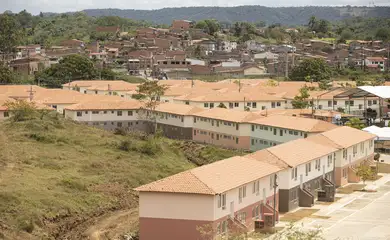Ongoing withdrawals from savings pressure Brazil’s real estate market

The exodus of investors from Brazil’s most traditional financial investment is making ripples across other sectors of the economy. One of the most widely established source of funds for financing real estate for the middle class at limited interest rates, the Brazilian Savings and Loans System (SBPE) is affected by the persistent withdrawal of money from savings accounts.

In January alone, investors withdrew BRL 20.1 billion more from savings accounts than they deposited—after three consecutive years of withdrawals. Savings accounts lost BRL 87.8 billion in 2023, BRL 103.2 billion in 2022, and BRL 35.4 billion in 2021.
As it stands today, banks are required to allocate 65 percent of savings deposits to the system, which covers up to 80 percent of properties up to BRL 1.5 million with interest limited to 12 percent a year, the ceiling of the Housing Finance System (SFH). This option has a historically low risk of default as installments are limited to 30 percent of the borrower's income, to be settled in up to 35 years.
Marcelo Tapai, specialist in real estate law, points out that the real estate market is undergoing a structural change, reflecting the loss of investor interest in savings accounts. Both the low yield on savings accounts and the expansion of options in the financial market are encouraging investors to flee, he argues.
“The reduction in the stock of money in savings is a path of no return. The financial market today is a great deal simpler. Popular investment banks allow people to invest in financial instruments with great ease and much greater prospect of returns. Savings bring losses. People are thinking of it less and less as an investment,” he noted.
Outlook
With less and less money in savings accounts, banks are allocating less resources to SPBE loans. According to the Brazilian Chamber of the Construction Industry (CBIC), the number of real estate unit launches under the system fell by 20 to 30 percent last year.
The chamber has no projections for this modality in 2024. At the end of last year, it merely said it believes the SBPE will recover in the second half of the year, adding that the number of launches will be at least the same as in 2023. The Brazilian Association of Real Estate Credit and Savings Entities (Abecip) predicts that the volume of credit in the system will remain stable compared to last year, affected both by the withdrawal of funds from savings and by still high interest rates.
Alternatives
With the SBPE under lower demand, middle-class borrowers have two ways to go. The first is financing with the Severance Indemnity Fund, or FGTS. This method also finances properties of up to BRL 1.5 million at an interest rate of up to 12 percent a year, but requires rules not required under SBPE. Buyers must work for at least three years with a formal contract, must not have another active SFH loan, or have another property in the city where they live or work or in neighboring municipalities or in the same metropolitan region.
The other option is the Real Estate Financing System (SFI), which follows market rates and conditions. This modality allows the financing of properties over BRL 1.5 million with no down payment, but usually has higher interest rates.




